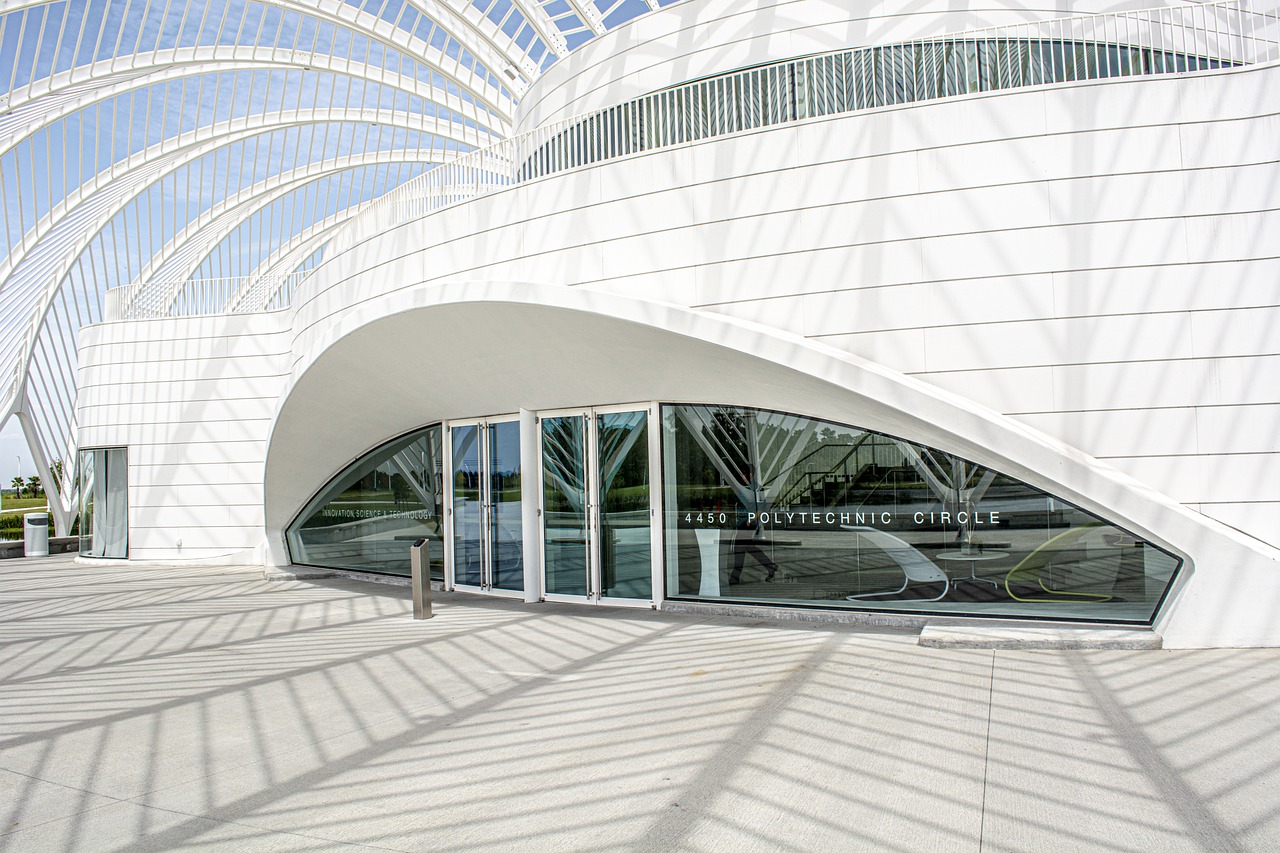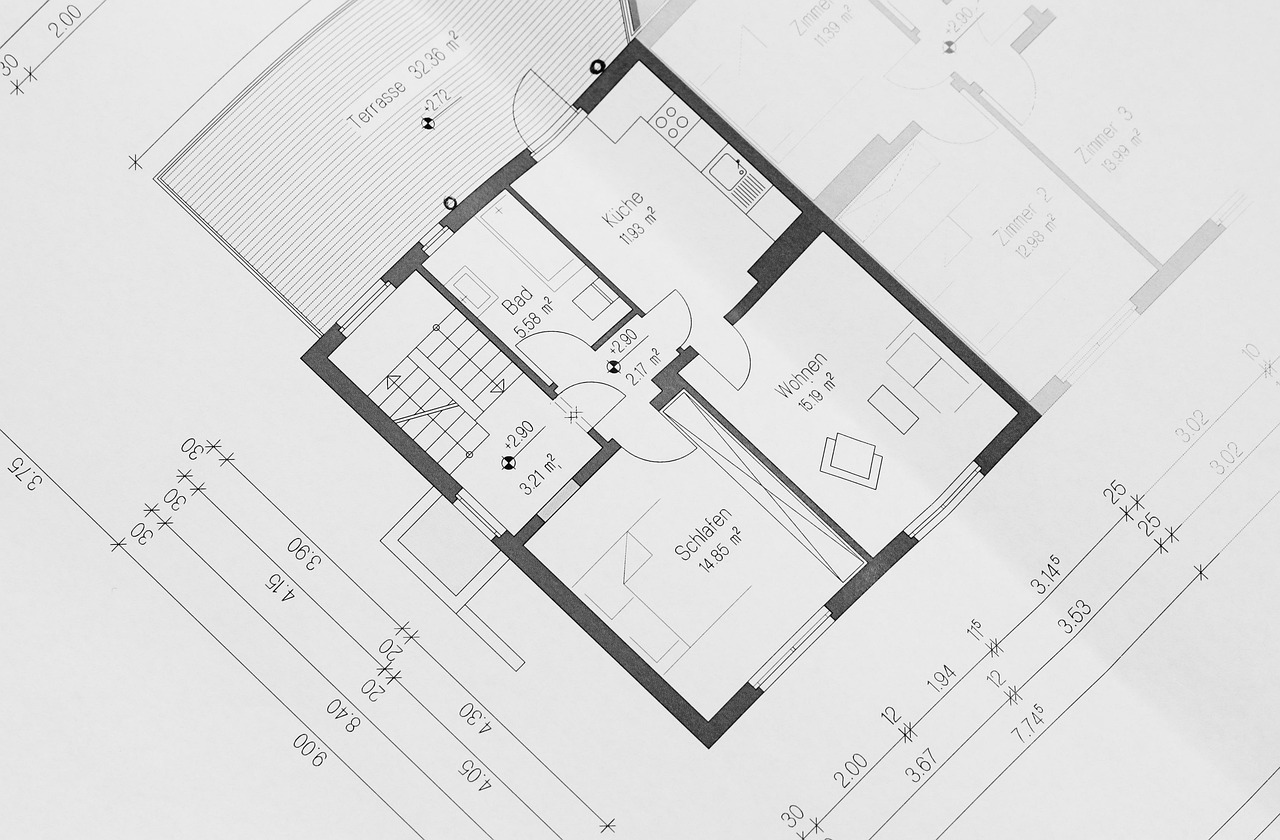How Architecture Reflects Cultural Values
Exploring the intricate connection between architectural design and cultural values reveals a fascinating tapestry of human expression. Architecture serves as a mirror reflecting the beliefs, traditions, and identities of diverse societies across the globe. From the towering pyramids of ancient Egypt to the sleek skyscrapers of modern cities, each structure tells a unique story woven with cultural threads.

Historical Influences on Architectural Styles
Exploring the intricate relationship between historical events and architectural styles reveals how societies have been profoundly influenced by the past. From the grandeur of ancient civilizations to the sleek lines of modern structures, the evolution of architectural design is a testament to the rich tapestry of human history. Each era has left its mark on the built environment, shaping not only the physical structures but also the cultural values and societal norms of the time.
Consider the majestic columns of ancient Greek temples, embodying the ideals of harmony and balance that defined the civilization. These architectural elements not only served a functional purpose but also conveyed the philosophical underpinnings of the society. Similarly, the soaring Gothic cathedrals of the Middle Ages reflected the spiritual fervor of the time, with intricate stained glass windows and towering spires reaching towards the heavens.
As societies evolved and interacted with one another, architectural styles began to blend and transform, creating hybrid forms that reflected the cross-pollination of ideas and cultures. The Renaissance period, for example, saw a revival of classical motifs and proportions, blending the elegance of ancient Rome with the artistic innovations of the time.
Moreover, the Industrial Revolution brought about a shift towards functionalism and efficiency in design, leading to the rise of modernist architecture characterized by clean lines and minimalist aesthetics. This departure from ornate decoration marked a new era in architectural expression, reflecting the changing values and priorities of society.
By examining the historical influences on architectural styles, we gain a deeper understanding of how the built environment is not just a reflection of technological advancements or stylistic preferences but a mirror of the cultural values and aspirations of a society at a particular point in time.

Symbolism in Architectural Elements
Symbolism in architectural elements plays a crucial role in conveying deeper cultural meanings and values through the design of buildings and structures. These symbols, motifs, and patterns are not merely decorative but serve as powerful tools for expressing societal beliefs, rituals, and aspirations within the built environment.
Architectural symbolism can be seen in various elements of a building, from the choice of materials to the arrangement of shapes and forms. For example, the use of specific colors or patterns may represent historical events, religious beliefs, or cultural traditions unique to a particular community. By incorporating these symbolic elements, architects create a visual language that communicates the essence of a culture through architecture.
Moreover, architectural symbolism often reflects the values and ideologies of a society, serving as a visual representation of its collective identity. For instance, the inclusion of certain motifs or ornaments in a building's design can signify unity, prosperity, or spirituality, reflecting the cultural values cherished by the community.
Furthermore, symbols in architectural elements can also serve as a form of storytelling, connecting the past with the present and preserving cultural narratives for future generations. By understanding the symbolism embedded in architectural design, individuals can gain insights into the historical context and cultural significance of a particular structure.
In conclusion, symbolism in architectural elements is a powerful means of expressing cultural values and beliefs, enriching the built environment with layers of meaning that resonate with society. By decoding these symbols, we can unravel the stories and traditions woven into the fabric of architectural design, appreciating the profound impact of cultural symbolism on our built heritage.

Regional Variations in Architectural Design
When we look at architectural design across different regions, it becomes evident that geographical locations and environmental factors play a significant role in shaping the structures we see. The diverse landscapes and climates around the world have influenced architectural choices, leading to a rich tapestry of styles that reflect the unique cultural identities of each region.
In regions with abundant natural resources like wood or stone, we often see architectural styles that make use of these materials in construction. For example, the log cabins of North America or the stone houses of the Mediterranean region are a reflection of the local resources available and the building techniques developed over generations.
Furthermore, climate plays a crucial role in determining architectural design. In hot and arid regions, we see buildings with thick walls and small windows to provide insulation from the heat, while in colder climates, structures are designed to retain heat and withstand harsh winters. This adaptation to environmental conditions not only ensures comfort but also reflects the resourcefulness and ingenuity of the local inhabitants.
Moreover, cultural influences also shape regional architectural styles. For instance, the intricate carvings and vibrant colors of buildings in India are a testament to the rich cultural heritage of the country, while the minimalist designs of Japanese architecture reflect the principles of simplicity and harmony ingrained in Japanese culture.
Regional variations in architectural design not only showcase the diversity of human creativity but also serve as a visual narrative of the values and traditions cherished by different communities. By studying these architectural marvels, we gain insights into the historical, social, and cultural contexts that have shaped the built environments we admire today.

Architectural Preservation and Cultural Heritage
Architectural preservation plays a crucial role in safeguarding cultural heritage, serving as a tangible link to the past and a reflection of a society's values and identity. By conserving historic buildings and landmarks, communities can maintain a connection to their roots and preserve the architectural styles that define their cultural legacy.
Through architectural preservation, future generations can gain insight into the history and traditions of their ancestors, fostering a sense of continuity and pride in their cultural heritage. These preserved structures not only serve as physical reminders of the past but also as symbols of resilience and endurance, standing the test of time amidst rapid urban development and modernization.
Architectural conservation efforts involve meticulous research, restoration, and maintenance to ensure that heritage buildings retain their original character and significance. By protecting these architectural gems, communities can celebrate their shared history and promote a sense of belonging and cultural pride among residents and visitors alike.
Preserving cultural heritage through architecture also contributes to tourism and economic development, attracting visitors who appreciate the beauty and historical significance of well-maintained heritage sites. By showcasing the unique architectural styles and craftsmanship of the past, communities can create sustainable tourism opportunities that support local businesses and promote cultural exchange.
Furthermore, architectural preservation serves as a reminder of the importance of respecting and honoring the traditions and achievements of previous generations. By valuing and protecting historic buildings, societies demonstrate a commitment to preserving their cultural identity and passing down a rich legacy to future inhabitants.

Architectural Innovation and Cultural Expression
Architectural innovation is the cornerstone of cultural expression, where designers and architects merge creativity with cultural values to create groundbreaking structures that captivate and inspire. It's like a dance between tradition and modernity, where the past whispers its secrets to the future, resulting in architectural marvels that reflect the essence of a society. Imagine a building that not only serves a functional purpose but also tells a story, evokes emotions, and challenges conventions. This blend of innovation and cultural expression is where architecture transcends mere construction and becomes a form of art that speaks to the soul.
Contemporary architects are constantly pushing boundaries and experimenting with new materials, technologies, and design concepts to infuse cultural elements into their creations. They draw inspiration from history, nature, and diverse cultural influences to craft buildings that symbolize the values and aspirations of a community. Each architectural masterpiece becomes a canvas where cultural narratives unfold, inviting viewers to explore and interpret the layers of meaning embedded in every curve, line, and detail.
Moreover, architectural innovation goes beyond aesthetics; it also plays a crucial role in shaping societal values and perceptions. By challenging traditional norms and reimagining spatial experiences, architects provoke thought, spark conversations, and redefine the way we interact with our environment. The fusion of cultural expression and architectural innovation not only transforms skylines but also reshapes the way we perceive our cultural heritage and envision our future.

Architectural Adaptation to Social Changes
Architectural adaptation to social changes is a fascinating aspect of how the built environment evolves in response to shifting societal needs and values. As cities grow, populations increase, and lifestyles change, architecture must adapt to accommodate these transformations. Urbanization, globalization, and technological advancements are just some of the factors driving changes in architectural design.
One way architecture adapts to social changes is through the repurposing of existing structures. Old factories may be transformed into trendy lofts, while historic buildings are renovated to serve modern functions. This adaptive reuse not only preserves architectural heritage but also meets the demands of contemporary living.
Moreover, the concept of mixed-use developments has gained popularity as a response to changing social dynamics. Integrating residential, commercial, and recreational spaces in a single complex reflects the need for convenience and connectivity in urban environments. These developments promote a sense of community and foster social interactions.
Architects are also incorporating sustainable design principles into their projects to address environmental concerns and promote healthier living. Green spaces, energy-efficient systems, and eco-friendly materials are becoming integral parts of architectural design, reflecting a growing awareness of the need for sustainable practices in the face of climate change.
Furthermore, the rise of smart technology is influencing architectural adaptation by enabling buildings to be more responsive to occupants' needs. From automated lighting and temperature control to integrated security systems, technology is shaping the way buildings are designed and operated, enhancing comfort, safety, and efficiency.
In essence, architectural adaptation to social changes is a dynamic process that reflects the evolving needs and values of society. By embracing innovation, sustainability, and community-centric design, architects play a crucial role in shaping the built environment to meet the challenges of the present and future.

Architectural Identity in Multicultural Societies
In multicultural societies, the architectural landscape becomes a vibrant tapestry woven from diverse threads of culture, history, and tradition. Picture a city where towering skyscrapers adorned with intricate Islamic patterns stand next to sleek modernist structures, reflecting the fusion of different cultural influences. This harmonious coexistence of architectural styles mirrors the rich tapestry of identities within the community, each building telling a story of its own.
Architects in multicultural societies face the unique challenge of blending various design elements to create spaces that resonate with people from different backgrounds. It's like composing a symphony where each note represents a different cultural heritage, yet together they create a harmonious melody that celebrates diversity. This process of architectural fusion not only bridges cultural divides but also fosters a sense of unity and inclusivity among inhabitants.
One fascinating aspect of architectural identity in multicultural societies is the reinterpretation of traditional motifs and symbols in contemporary structures. Imagine a mosque designed with modern materials and techniques, yet adorned with intricate carvings inspired by ancient cultural symbols. This blending of old and new creates a visual dialogue between the past and the present, honoring heritage while embracing innovation.
Moreover, architectural projects in multicultural settings often serve as platforms for cultural exchange and dialogue. Collaborative design processes involving architects, artists, and community members from diverse backgrounds lead to the creation of spaces that reflect shared values and aspirations. These architectural endeavors not only showcase the beauty of cultural diversity but also promote mutual understanding and respect.
Ultimately, architectural identity in multicultural societies is a testament to the power of design in fostering cross-cultural connections and celebrating the richness of human experience. Through innovative and inclusive architectural practices, communities can build environments that transcend boundaries and embody the collective spirit of unity in diversity.

Sustainability and Cultural Responsibility in Architecture
When it comes to architecture, sustainability and cultural responsibility play crucial roles in shaping the built environment for present and future generations. Sustainable design practices not only focus on reducing environmental impact but also emphasize the preservation of cultural values and traditions. By integrating eco-friendly materials, energy-efficient systems, and green technologies, architects can create buildings that not only minimize their carbon footprint but also contribute to the cultural heritage of a society.
Architects are increasingly recognizing the importance of designing structures that respect and reflect the cultural identity of a community. Incorporating elements of local traditions, craftsmanship, and historical narratives into architectural projects can establish a sense of continuity with the past while embracing the future. This blend of tradition and innovation not only enriches the visual appeal of buildings but also fosters a deeper connection between people and their built environment.
Moreover, sustainable architecture goes beyond just environmental considerations; it also encompasses social and cultural aspects. By designing spaces that promote social interaction, inclusivity, and well-being, architects can address the evolving needs and values of diverse communities. Creating sustainable urban environments that prioritize pedestrian-friendly layouts, green spaces, and mixed land uses can enhance the quality of life for residents while preserving the cultural fabric of a place.
Architectural projects that uphold cultural responsibility often involve extensive research, community engagement, and collaboration with local stakeholders. By consulting with residents, historians, and cultural experts, architects can ensure that their designs resonate with the values and aspirations of the people they serve. This participatory approach not only enriches the design process but also fosters a sense of ownership and pride among community members.
In conclusion, sustainability and cultural responsibility are integral aspects of contemporary architecture that seek to create harmonious and enduring built environments. By embracing environmentally conscious practices and honoring cultural heritage, architects can contribute to a more sustainable and culturally rich future. Balancing innovation with tradition, functionality with aesthetics, and global perspectives with local identities, architects have the power to shape a world where architecture not only reflects cultural values but also embodies a deep sense of stewardship towards the planet and its inhabitants.
Frequently Asked Questions
- What is the significance of architecture in reflecting cultural values?
Architecture serves as a visual representation of a society's beliefs, traditions, and identity. It reflects the values and aspirations of a culture through the design and construction of buildings, showcasing the essence of a community's heritage and history.
- How do historical influences impact architectural styles?
Historical events and traditions play a crucial role in shaping architectural styles over time. They contribute to the evolution of design principles and influence the aesthetic choices made by architects, resulting in a diverse range of architectural expressions that embody the cultural heritage of a society.
- Why is architectural preservation important for cultural heritage?
Preserving historic buildings and landmarks is essential for safeguarding a society's cultural heritage. It helps maintain a connection to the past, allowing future generations to appreciate and learn from the architectural achievements of their ancestors, thus ensuring the continuity of cultural identity.
- How does architecture adapt to social changes?
Architecture responds to social transformations by adapting its design principles to accommodate changing cultural values and lifestyles. Urbanization, globalization, and technological advancements influence architectural trends, leading to innovative solutions that reflect the evolving needs and preferences of society.
- What role does sustainability play in preserving cultural values in architecture?
Sustainability in architecture is crucial for preserving cultural values and traditions for future generations. By incorporating environmentally conscious design practices, architects can contribute to the conservation of cultural heritage while promoting a more sustainable and responsible approach to architectural innovation.



















